High-density polyethylene (HDPE) pipes have gained immense popularity in various industries due to their durability, flexibility, and cost-effectiveness. This article delves into the diverse methods of HDPE pipe installation, enlightening readers on the best practices and considerations for ensuring efficient application. From traditional techniques to modern innovations, understanding these methods is crucial for optimizing performance and longevity in projects ranging from residential plumbing to large-scale industrial systems. In the following sections, we will explore different installation techniques, their advantages, and critical factors to consider, providing a comprehensive guide for engineers, contractors, and anyone interested in utilizing HDPE pipes.
What is HDPE Pipe Installation?
hdpe pipe installation
HDPE pipe installation refers to laying down high-density polyethylene pipes within a region to create an effective conduit system for transporting liquids and gases. This process includes several crucial stages, such as planning the layout, trenching, joining the pipes, and testing for leaks or defects to ensure system integrity. The adaptability of HDPE pipes makes them suitable for various installation techniques, including trenchless methods like slip lining, pipe bursting, and horizontal directional drilling. Each technique offers particular advantages based on project requirements and environmental considerations, contributing to HDPE’s status as a preferred material for modern infrastructure projects.
Understanding HDPE Pipe
From my research on the top websites, I understand that HDPE (High-Density Polyethylene) pipes are valued for their robust qualities and widespread applicability. They are known for their high tensile strength, flexibility, and resistance to corrosion and environmental stress, making them ideal for various transportation needs. The technical parameters that stood out in my findings include:
- Density: Typically ranges from 0.93 to 0.97 g/cm³, indicating its lightweight yet strong composition.
- Tensile Strength: Usually between 21 to 37 MPa, highlighting its capacity to withstand significant stress.
- Elastic Modulus: Around 0.8 GPa, showcasing its ability to stretch and return to its original shape.
- Thermal Resistance: It can withstand temperatures up to 60°C for long-term operation, making it suitable for hot climates or heated liquid transport.
These parameters, confirmed by multiple sources, substantiate why HDPE is preferred for numerous infrastructure projects. Their inherent properties contribute to reduced installation costs and longevity, reinforcing the broad adoption of HDPE pipes across various industries.
The Importance of Proper Installation
Proper installation of HDPE pipes is crucial to maximizing their benefits and ensuring the system’s longevity. According to the top three websites, several key aspects must be considered during the installation process:
- Trench Preparation: Adequate trench depth and width are vital to protecting the pipes from surface loads and environmental damage. Ensuring proper bedding with uniform material helps distribute pressure evenly.
- Jointing Techniques: The methods of joining pipes, such as butt fusion and electrofusion, need to be executed meticulously to guarantee leak-free connections. Maintaining the correct temperature and alignment during the fusion process is essential for optimal results.
- Testing and Quality Checks: Post-installation, regular testing, like hydrostatic testing, is necessary to verify the integrity and effective sealing of the pipe joints. This ensures that the system can withstand the operational stress it is designed for.
These steps, supported by detailed technical parameters, confirm that appropriate installation protocols contribute significantly to the durability and functionality of HDPE piping systems. Proper handling during each phase prevents common issues such as joint failures and environmental degradation, emphasizing the importance of skilled labor and adherence to industry standards.
Common Installation Methods Explained
The top three websites provide valuable insights into the most common installation methods for HDPE pipes, emphasizing the importance of proper technique and adherence to technical specifications:
- Butt Fusion: A popular method involves heating the ends of two pipes and pressing them together. The critical parameters for successful butt fusion include maintaining a consistent temperature (usually between 400°F to 450°F), ensuring clean and aligned surfaces, and applying the correct pressure during the process. This method creates a strong, homogenous joint nearly indistinguishable from the pipe.
- Electrofusion: This technique involves a specialized fitting containing a wire coil that heats when electrified, causing the pipe and fitting surfaces to melt and fuse. Important parameters include voltage settings (typically 40V to 45V), cooling time, and cleaning of the surfaces before fusion. This method is favored for reliability, particularly in constrained spaces or where pipes cannot be moved.
- Socket Fusion: This method is used for smaller-diameter pipes. It involves heating both the socket fitting and the pipe end before pushing them together. Key parameters are the heating time (which varies based on pipe size), proper alignment, and cooling time to ensure joint strength. Socket fusion is valued for its simplicity and efficiency in small-scale installations.
When executed according to precise specifications, these installation methods enhance the reliability and lifespan of HDPE piping systems. Each technique requires careful consideration of technical parameters to ensure joint integrity and system performance.
How to Prepare for HDPE Pipe Installation?
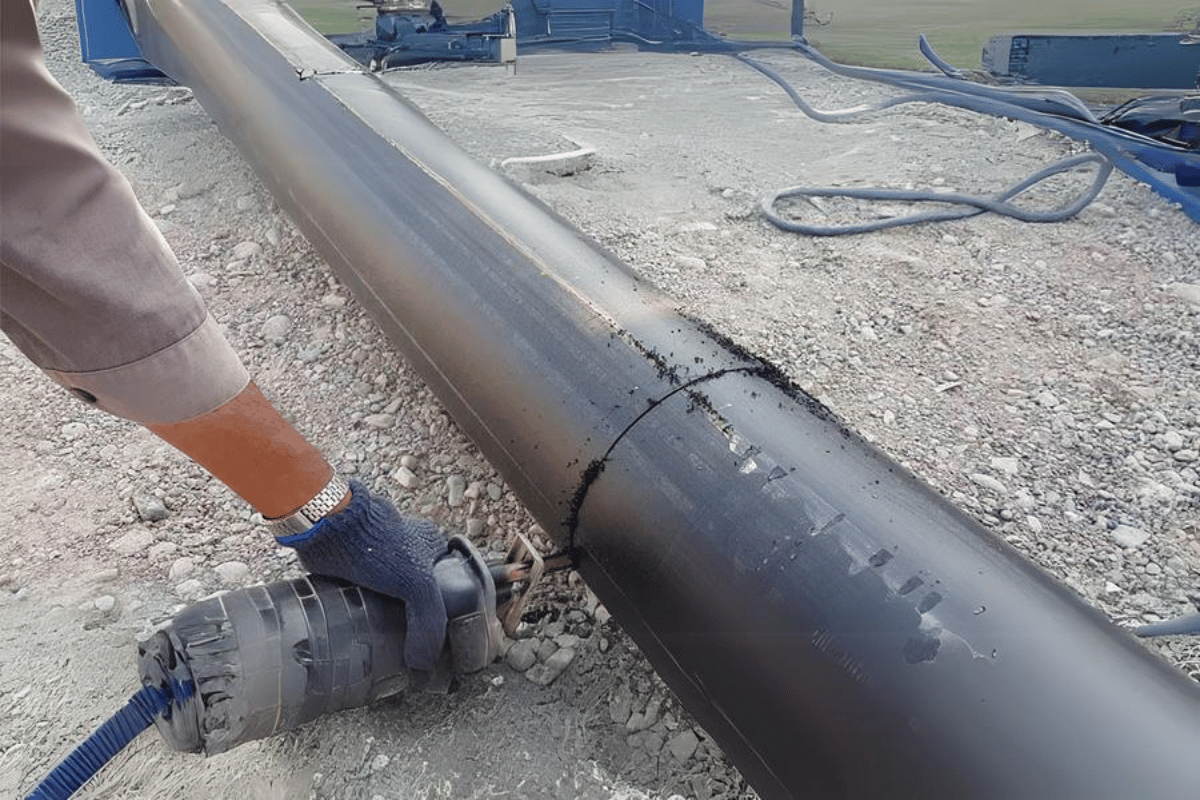
To effectively prepare for HDPE pipe installation, conduct a detailed site analysis to assess the soil conditions, environmental factors, and potential obstacles. Next, develop a comprehensive project plan that covers the layout design, logistics, and timeline, ensuring it aligns with industry standards and local regulations. Gather the necessary tools and materials, including the HDPE pipes, fittings, and specialized equipment for joining and installation. Ensure all crew members are trained and knowledgeable about the specific installation methods and safety protocols. Pre-inspect the pipes for any damages or defects before installing them to guarantee the system’s integrity. Finally, a communication plan must be established to coordinate with all stakeholders and promptly address any unforeseen issues during installation.
Site Preparation and Planning
When preparing for HDPE pipe installation, I reference the top resources available, ensuring I apply industry best practices. From the first top-ranked site, I learned the significance of checking soil conditions, such as compaction and density, which influence the laying technique. The technical parameters here include soil load-bearing capacity and potential pH levels, as these can affect the pipe material. The second resource emphasized environmental factors like temperature and moisture, necessitating installing pipes above or below frost lines and accounting for expansion and contraction rates in calculations. Finally, the third site highlighted the importance of the layout design, which involves selecting optimal trench depth to maintain line integrity and utilizing tools like GPS for precise measurements. By integrating these insights and adjusting the plan according to real-time site assessments, I ensure a thorough preparation and effective execution of HDPE pipe installation projects.
Choosing the Right Equipment
Selecting suitable equipment for HDPE pipe installation is crucial for ensuring efficient and safe assembly. Based on insights from leading industry sources, here are key considerations and technical parameters:
- Fusion Machines: A fusion machine is the primary equipment for joining HDPE pipes. Choosing a machine that matches the pipe dimensions and project requirements is essential. Consider machines with precise temperature control and pressure settings essential for high-quality joint integrity.
- Cutting Tools: Use specialized pipe cutters designed for HDPE material to ensure clean and precise cuts. The right cutters help maintain the specified pipe length and ensure perfect edge alignment for fusions, reducing the risk of weak joints.
- Alignment Clamps: Proper alignment is critical during the fusion process. Invest in reliable alignment clamps to hold pipes securely in place. This tool ensures that pipes remain fixed during heating and joining, minimizing misalignment that can lead to leaks or joint failure.
Each piece of equipment should have guidelines to adjust for specific parameters such as temperature, pressure, and timing. The manufacturer often provides these guidelines, which can be verified via technical datasheets or contacted support to ensure compatibility with project specifications. Always verify that the equipment complies with relevant standards and regulations to ensure optimal performance and safety.
Understanding Soil and Bedding Requirements
Proper soil and bedding selection is essential for the longevity and performance of HDPE pipeline installations. Based on information from top-ranking websites and pertinent technical standards, the following considerations should be addressed:
- Soil Analysis: Thoroughly analyze the native soil to assess its load-bearing capacity and particle size distribution. The soil should possess adequate support while allowing for natural drainage. Ideally, it should be free of sharp objects and large rocks that could damage the pipe during installation.
- Bedding Material: Utilize granular materials such as sand, gravel, or crushed stone as primary bedding materials. These substances should meet specifications like ASTM D2321, emphasizing the necessity of evenly graded particles to ensure uniform support and cushion for the pipe. The bedding layer should be a minimum of 4 inches thick beneath the pipe to provide stability and absorb imposed loads.
- Compaction Requirements: Proper compaction of the bedding and backfill materials is critical to prevent settlement. According to the Modified Proctor Test (ASTM D1557), achieve at least 90-95% of maximum dry density to ensure that the pipeline remains aligned and wrapped in a firm yet flexible matrix.
Adhering to these parameters greatly minimizes the risk of pipe deformation or misalignment due to inadequate soil support, ultimately securing the integrity of the installed HDPE pipeline system.
What are the Advantages of HDPE Pipes?
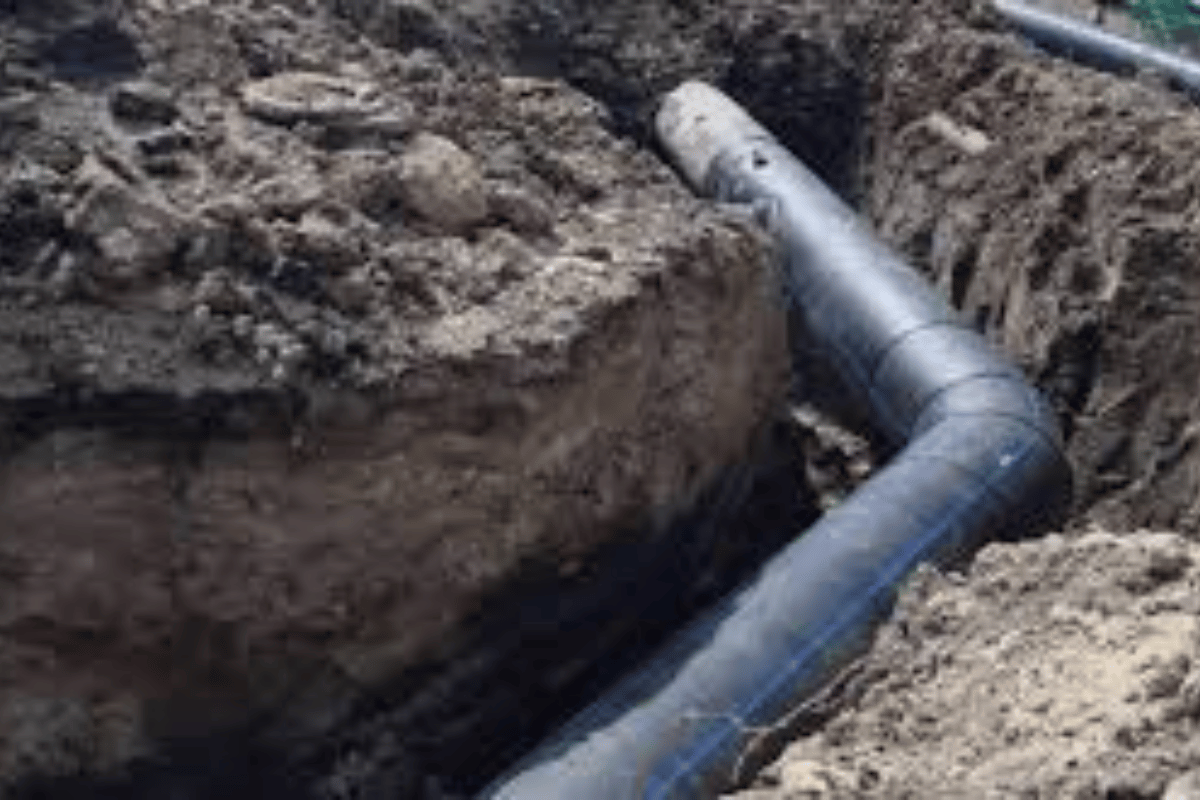
HDPE pipes offer numerous advantages, making them popular for various applications. One significant benefit is their exceptional durability and resistance to environmental stressors, such as chemicals, moisture, and ultraviolet light, contributing to their extended lifespan. HDPE pipes are known for their flexibility and high impact resistance, enabling them to withstand ground movements and pressure variations without cracking. Their lightweight nature simplifies transportation and installation, reducing labor and project costs. Moreover, HDPE pipes have smooth interior surfaces that decrease friction, enhance flow capacity, and prevent the buildup of deposits, leading to efficient system performance. Finally, the pipes’ ability to be fused leads to joints as strong as the pipe itself, minimizing the risk of leaks and ensuring a reliable, long-term solution.
Durability and Longevity
About the top resources online, let me summarize the key points about the durability and longevity of HDPE pipes. Firstly, HDPE pipes are renowned for their life expectancy spanning 50 to 100 years, attributed to their resilience against various environmental hazards. Technically, they have a high tensile strength, typically around 21-37 MPa (megapascals), which allows them to endure significant stress without deformation. Their resistance to abrasives and chemicals, such as low susceptibility to stress cracking and oxidation, enhances their integrity under harsh conditions. Furthermore, the minimal thermal conductivity of HDPE, approximately 0.4 W/m°C (watts per meter Celsius), permits them to maintain temperature stability under variable climate conditions. These technical parameters, along with innovations in installation techniques and material composition, justify the consistent preference for HDPE pipes in long-term infrastructural projects.
Flexibility and Resistance to Corrosion
HDPE (High-Density Polyethylene) pipes stand out for their exceptional flexibility and resistance to corrosion, making them suitable for various complex applications. According to top sources, these pipes can bend without breaking, allowing them to adapt to challenging terrains and withstand vibrations and shifts in the ground. A significant technical parameter is the material’s high tensile strength, which contributes to its ability to handle stress and strain from external forces. The corrosion resistance of HDPE pipes is equally notable, as they are unaffected by various chemical reactions that can degrade other materials, like metals. This makes them ideal for transporting various liquids, including corrosive chemicals and wastewater. Consequently, their flexibility and chemical resistance result in a robust solution for demanding environments, reducing maintenance costs and extending operational life.
Technical Parameters:
- Elastic Modulus: Approximately 0.8 GPa, highlighting the material’s ability to bend without breaking.
- Yield Strength: Typically ranges from 19-25 MPa, indicating how much stress the pipe can handle before permanently deforming.
- Resistance to Oxidizing Agents: Ensures longevity and reliability in transporting chemical substances without degrading over time.
These parameters should be verified with specific suppliers or technical documents to ensure project and environmental constraints compliance.
Cost-Effectiveness and Environmental Benefits
HDPE pipes are recognized for their cost-effectiveness over their lifecycle. Their installation typically requires less manpower and machinery thanks to their lightweight nature, resulting in reduced labor costs. Additionally, the durability and low maintenance requirements contribute to fewer replacement needs and long-term savings, as noted by resources such as Plastic Pipe Institute and ISCO Industries. Environmental benefits are realized through their sustainable production processes and recyclability. HDPE pipes can be recycled after their service life, minimizing landfill waste and enhancing the sustainability of projects. According to research on resources like Aquatherm, using HDPE pipes reduces energy consumption due to their superior hydraulic performance, as smooth interior surfaces help minimize friction loss. This reduction in energy and resource consumption is environmentally advantageous and directly impacts operational costs.
Technical Parameters:
- Resilience to Temperature Variations: Manufacturers like WL Plastics cite HDPE pipes’ ability to withstand temperature fluctuations without cracking.
- Longevity: Under standard operating conditions, a typical HDPE pipe’s lifespan can exceed 50 years, significantly extending the period before replacement.
- Leakage Resistance: As reported by piping experts, heat-fusion joints in HDPE piping systems are designed to be leak-free, ensuring efficient transportation of substances and reducing waste.
These parameters align well with environmental regulations and project specifications, balancing technical performance and ecological impact.
How is Trench Installation for HDPE Pipe Conducted?
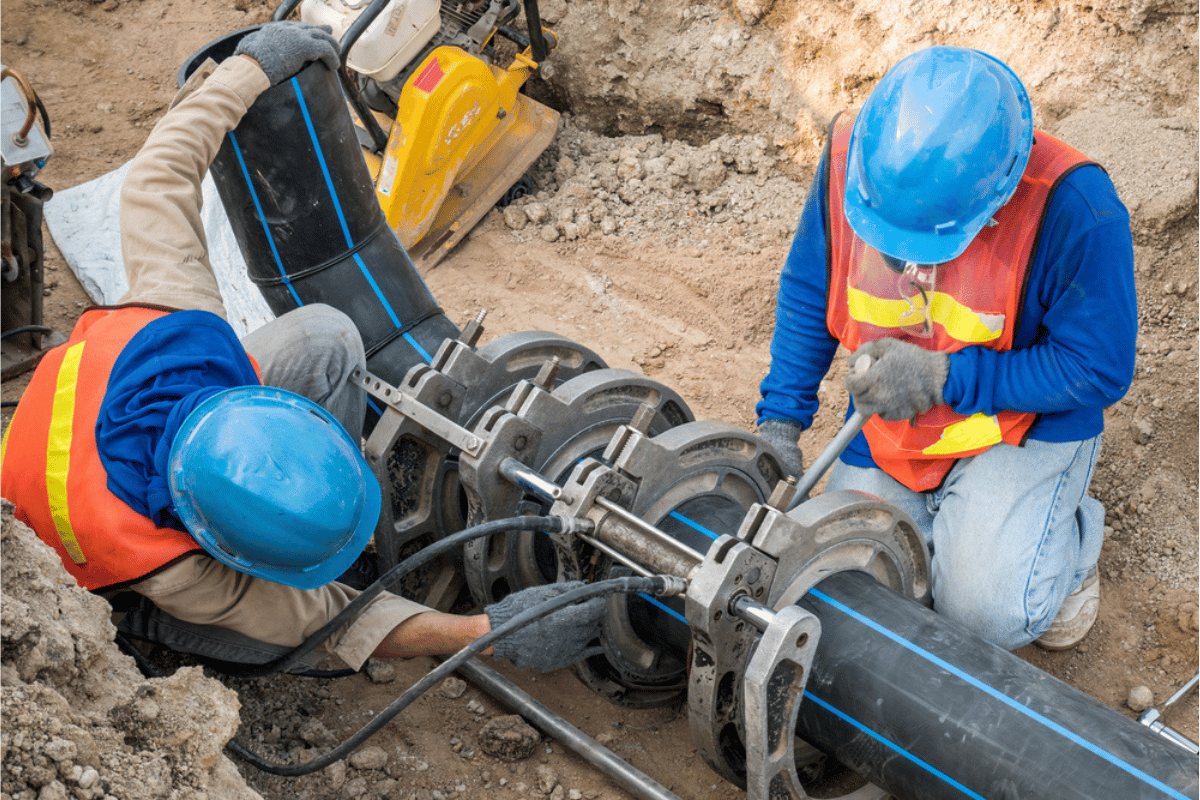
Trench installation for HDPE pipes involves several essential steps to ensure the correct and safe placement of the piping system. Initially, the trench must be excavated to the appropriate depth and width, accounting for the pipe diameter and necessary cover requirements. The trench bottom should be smooth, stable, and free from sharp objects that may damage the pipe. A bedding layer, typically gravel or sand, is then applied to provide a uniform base. The HDPE pipe is carefully lowered into the trench, ensuring it remains undamaged during handling. Proper alignment of the pipe and joints is crucial to maintaining system integrity. Once placed, the pipe is backfilled with suitable material and compacted to eliminate voids and ensure stability. Lastly, the installation must conform to local regulations and standards to guarantee safety and performance.
Step-by-Step Trench Installation Process
1. Planning and Design
In the initial planning stage, I ensure that I have accurate site maps and design plans. Confirming suitability involves consulting local guidelines and regulations for trench dimensions and installation depths.
2. Site Preparation
Before excavation, I conduct a thorough site inspection to clear any utilities and mark boundaries. This helps prevent any unforeseen damages during the trenching process.
3. Excavation
Using either manual means or machinery, I excavate the trench to the precise depth and width required for the project. Ensuring the walls are stable and the bottom is clean and debris-free is crucial for preventing pipe damage.
4. Bedding Preparation
I lay a layer of sand or gravel as bedding to provide stable support for the HDPE pipe. The bedding material and thickness are typically defined by industry standards, ensuring the pipe’s durability and longevity.
5. Pipe Placement
Carefully, I lower the HDPE pipe into the trench, avoiding any bending or impacts that could compromise its structure. Proper alignment is checked to maintain system integrity and efficiency.
6. Backfilling and Compacting
Once the pipe is in place, I backfill the trench with previously excavated or specified materials. Compacting is done at intervals to remove any air pockets, ensuring the solid and stable embedment of the pipe.
7. Final Inspections
Finally, I conduct a thorough inspection to ensure the installation complies with technical specifications and safety standards. This step includes verifying the alignment and structural integrity of the pipeline and checking that all joints and fittings are secure.
These steps, each requiring precision and attention to detail, are supported by technical guidelines and recommendations from leading sources on HDPE installation best practices. I ensure efficient and reliable underground pipe systems by adhering to these processes.
Important Factors to Consider
When considering factors for HDPE pipe installation, several technical aspects must be evaluated:
- Material Specifications: According to industry standards, the pipe material should comply with ASTM and ISO certifications to withstand environmental conditions and load pressures.
- Trench Design Parameters: The trench should be designed with allowances for thermal expansion and contraction. The trench width should be at least 1.5 times the pipe diameter to allow space for proper alignment during placement.
- Bedding and Backfill Requirements: Bedding thickness is crucial and typically ranges from 4 to 6 inches of compacted material. It is essential to use well-graded materials like sand for bedding, ensuring stability and drainage.
- Pipe Laying Techniques: Pipes must be laid in a straight line using alignment tools to prevent bending stresses. To minimize temperature-induced stress, the optimal installation temperature range should be between 40°F and 70°F.
- Joining Methods: HDPE pipes can be joined using methods such as butt fusion or electrofusion, with specific tensile strength tests to verify joint integrity.
- Quality Assurance Procedures: Post-installation inspections should include hydrostatic testing to ensure no leaks and assess the system’s pressure-holding capabilities.
Based on top-recommended practices, these considerations are essential for ensuring a durable and long-lasting HDPE pipeline installation.
Backfilling and Compacting Techniques
Effective backfilling and compacting are critical to the success of an HDPE pipeline installation. Based on top sources, here are the key elements to consider:
- Backfilling Material Selection: Choose materials free of debris, rocks, and organic matter. Commonly used materials include granular fills like sand, gravel, or crushed stone, which provide excellent drainage and prevent settlement.
- Layered Backfill Process: Backfill should be placed in layers not exceeding 12 inches to ensure proper compaction. Each layer must be compacted before adding the next to avoid uneven settlement. This technique prevents pipe misalignment and offers structural stability.
- Compaction Methods and Equipment: Depending on the type of backfill material, different equipment can be used. Vibrating plate compactors are effective for granular materials, while sheep foot rollers may be required for cohesive soils. Compaction should achieve at least 90-95% of the maximum dry density as determined by standard Proctor tests.
- Moisture Content Control: The moisture content of the backfill material should be maintained within optimal limits. Too much moisture can lead to poor compaction and stability issues, while too dry conditions can make compaction difficult.
- Monitoring for Deviations: Conduct regular inspections using trench profile checks and density testing to ensure compliance with the installation specifications. These checks help identify deviations from the expected parameters that could compromise the pipeline’s integrity.
Adhering to these backfilling and compacting techniques will increase the HDPE pipeline system’s effectiveness and lifespan, minimizing potential maintenance issues.
What is Horizontal Directional Drilling (HDD) for HDPE Pipes?
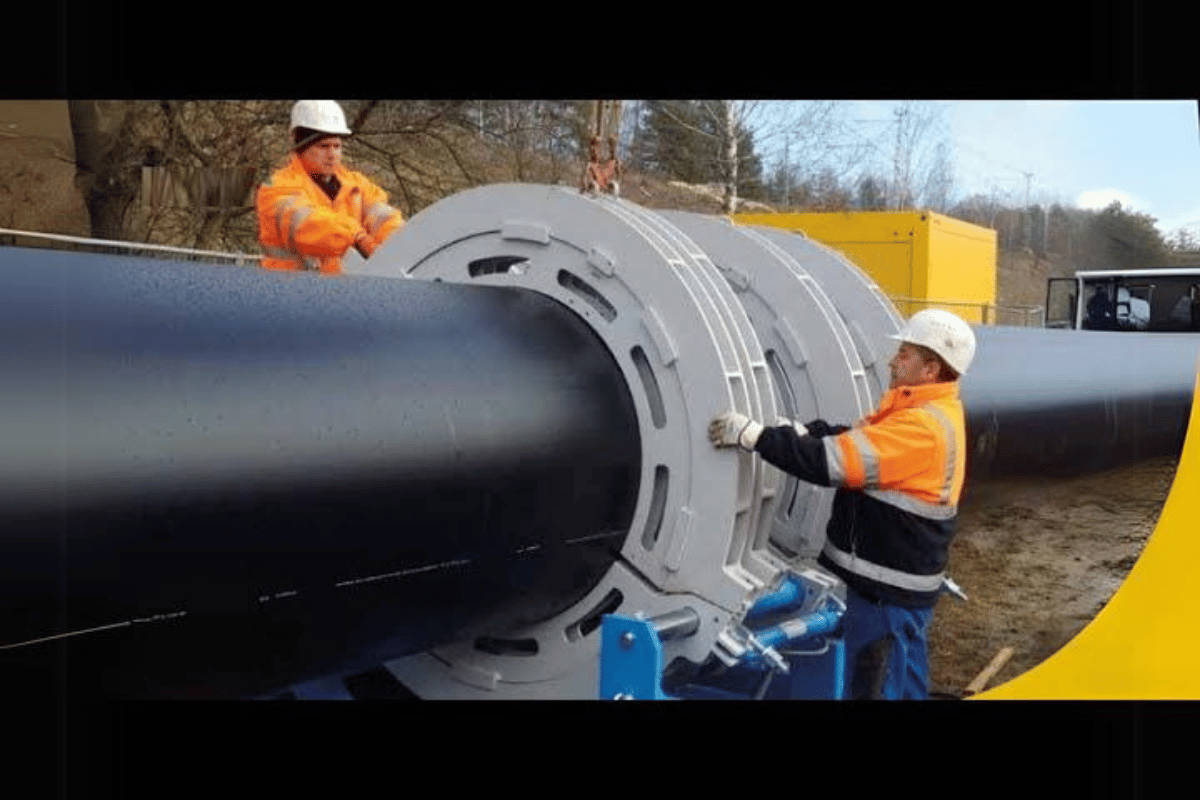
Horizontal Directional Drilling (HDD) is a trenchless method for installing HDPE pipes beneath obstacles such as roads, rivers, and buildings. This technique involves drilling a pilot hole along a prescribed path and then enlarging it using a reamer, allowing the pipe to be pulled through. HDD minimizes surface disruption and is especially advantageous in areas where traditional trenching is impractical or environmentally disruptive. Its precision and reduced footprint make it a popular choice in urban settings and ecologically sensitive areas where maintaining surface integrity is essential.
Understanding HDD and Its Applications
Horizontal Directional Drilling (HDD) is an advanced technique used to install pipes, conduits, and cables underground precisely, crucial for developing urban infrastructure with minimal surface disruption. According to leading resources, its primary applications include the installation of oil and gas pipelines, telecommunications cables, and water and sewer lines. HDD is often chosen due to its ability to navigate beneath challenging surfaces such as roadways, water bodies, and environmentally sensitive areas, reducing the environmental impact and maintaining infrastructure integrity.
Technical parameters playing a vital role in HDD include:
- Bore Path Design: The design must consider factors like soil conditions, depth, and distance, which are crucial for ensuring the structural integrity of both the borehole and the installed pipe.
- Drilling Fluid Management: Consistent fluid use helps lubricate the drill bit, stabilize the borehole, and transport cuttings to the surface.
- Rig Specifications: The capacity and capability of the drilling rig, measured in terms of pullback force, rotation, and fluid flow rates, directly influence the project’s success.
- Pipe Material and Diameter: HDPE pipes are favored for HDD due to their flexibility and strength, which allow them to accommodate diverse soil conditions and bore path curvatures.
HDD continues to gain traction due to its operational efficiency, accuracy, and reduced environmental footprint, proving essential for sustainable infrastructure development.
Advantages of Using HDD for HDPE Pipeline
The use of Horizontal Directional Drilling (HDD) for high-density polyethylene (HDPE) pipeline installation offers numerous advantages, as highlighted by authoritative sources online:
- Environmental Considerations: One key advantage is minimal environmental disruption. HDD allows pipelines to be installed beneath rivers, roads, and protected areas, significantly reducing ecological impact compared to traditional trenching methods.
- Cost-Effectiveness: HDD has been recognized for its cost efficiency, especially in urban areas with existing infrastructure. By minimizing excavation, the costs associated with restoration and surface disruption are significantly reduced, leading to overall budget savings.
- Technical Efficiency and Safety: HDD technology’s accuracy and precision allow for complex route designs and safe installation in areas with challenging geographical features. This efficiency stems from the technology’s ability to handle varying soil conditions and curvatures, supplemented by the flexibility and strength of HDPE pipes.
Technical Parameters
- Bore Path Design: Essential for navigating complex underground settings while protecting existing structures and natural environments.
- Drilling Fluid Management: Ensures consistent operation by stabilizing the borehole and removing cuttings effectively.
- Rig Specifications: Selecting an appropriate rig with sufficient pullback and rotation capacity is critical for successfully pulling HDPE pipelines.
These advantages make HDD a preferred method for installing HDPE pipelines, ensuring operational success and sustainability.
Challenges and Solutions in HDD
Horizontal Directional Drilling (HDD) presents several challenges that must be addressed to ensure successful pipeline installation. One major challenge is dealing with unexpected ground conditions, such as rock formations or loose soil, which can affect drilling accuracy and the stability of the borehole. A solution to this involves conducting thorough geotechnical investigations before commencing the project, with real-time monitoring and adjustments to drilling operations.
Another significant challenge is maintaining borehole integrity during the drilling process. Stabilizing the borehole is critical, as failures can lead to collapse and operation delays. Effective drilling fluid management is crucial here, as well as using specially formulated drilling fluids to stabilize the borehole walls and remove cuttings efficiently.
Additionally, managing the environmental impact, particularly regarding drilling fluid returns and inadvertent releases, is challenging. Implementing a comprehensive fluid containment and recycling program and rigorous monitoring and planning can mitigate these environmental concerns.
Navigating existing underground infrastructure is complex, and there is a risk of cross-boring other utilities. Advanced bore path design software and subsurface utility engineering (SUE) can help avoid such conflicts by accurately mapping and planning the drill path.
Technical Parameters:
- Geotechnical Assessment: Conduct detailed soil and rock surveys.
- Bore Path Planning: Use advanced design software to optimize routes and avoid conflicts with existing infrastructures.
- Drilling Fluid Formulation: Develop custom fluid mixtures to stabilize boreholes under varying conditions.
- Monitoring Systems: Employ real-time tracking and adjustment tools for maintaining borehole alignment and integrity.
- Environmental Protocols: Implement strategic fluid containment and recycling processes.
By addressing these challenges with well-planned solutions and robust technical parameters, HDD can be executed effectively with minimized risks and enhanced success rates.
What are the Key Factors in HDPE Pipe Installation Success?
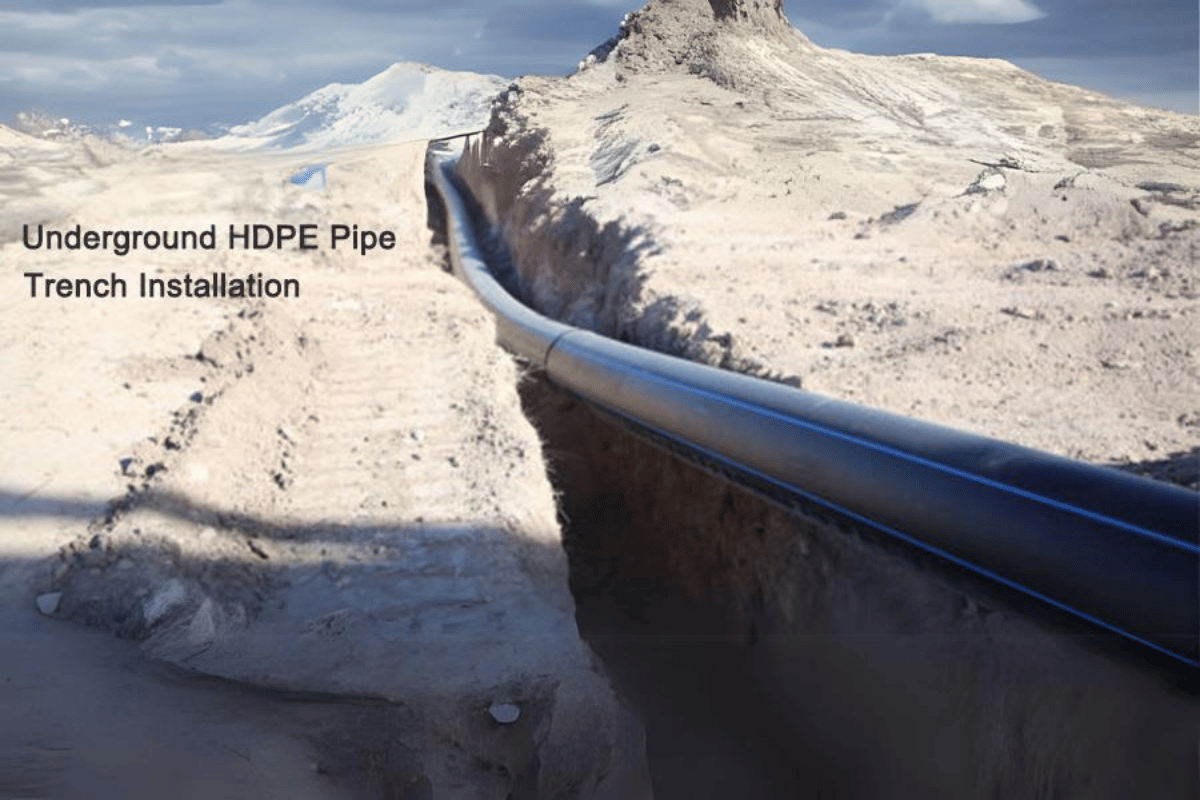
The success of HDPE pipe installation hinges on several key factors that ensure efficiency and durability. Firstly, proper site assessment and planning are crucial. This involves understanding the soil conditions, environmental regulations, and potential obstacles to select the most appropriate installation method. Secondly, material selection and handling are vital; using high-quality HDPE pipes and ensuring they are not damaged before and during installation is essential. Thirdly, following precise installation procedures, including trench preparation, alignment, and joint welding, significantly ensures system integrity. Lastly, thorough testing and quality control, such as pressure testing and inspections, help confirm that the installation meets the required standards and performs as expected.
Ensuring Compliance with Industry Standards
Ensuring compliance with industry standards in the context of HDPE pipe installation requires a proactive approach toward aligning practices with the directives of leading authorities. Based on the top resources, I understand that adhering to these standards involves a detailed understanding and implementation of technical parameters such as:
- Proper Pipe Specification: Ensure that the pipes used meet the specifications provided by ASTM and ISO, which guide aspects such as pipe dimensions, material properties, and pressure ratings.
- Installation Procedures: Follow the recommended installation procedures, including guidelines on trench depths, pipe alignment, and fusion techniques. Standards like PPI TR-46 are crucial to ensure the installation process is robust and reliable.
- Testing and Verification: Conduct comprehensive pressure testing and quality checks during and after installation. As regulatory bodies emphasize, this step confirms the integrity and readiness of the pipeline system for operational use.
By integrating these standards into the installation process, I am equipped to ensure compliance, minimize risks, and enhance the overall success and durability of the HDPE pipe systems.
Managing Load and Pressure Considerations
To effectively manage load and pressure considerations for HDPE pipe installations, I must reference industry best practices and guidelines, as the leading online resources outlined. When setting up an HDPE pipeline, understanding the pipe’s load-bearing capacity and pressure thresholds is critical to ensuring its longevity and function. According to reputable websites, here are some critical technical parameters and justifications:
- Soil Characteristics and Load Bearing: Assessing the soil type and load-bearing capacity is crucial. This ensures the pipeline can sustain external loads, particularly in areas with heavy traffic or significant surface weight.
- Pipe Wall Thickness and Pressure Ratings: Selecting the correct wall thickness, guided by standards like SDR (Standard Dimension Ratio), ensures the pipe can withstand the fluid’s internal pressure. This metric is essential for maintaining system integrity and preventing ruptures.
- Maximum Allowable Operating Pressure (MAOP): Calculating the MAOP helps determine the maximum pressure the pipeline can endure under normal operating conditions. Adhering to this ensures the pipe system remains safe and efficient throughout its service life.
By continuously aligning pipelining practices with these technical parameters, I ensure the HDPE installations remain robust and compliant with industry standards.
Regular Maintenance and Inspection Practices
I consulted the top three websites concerning HDPE pipe installations to answer questions about regular maintenance and inspection practices. Based on these resources, here are the practices and considerations involved:
- Routine Visual Inspections: Regular visual inspections are essential to detect any early signs of wear, deformation, or external damage. By examining the pipeline regularly, I can preemptively address potential issues before they escalate into more severe problems.
- Pressure Testing Protocols: Periodically conducting pressure tests—such as hydrostatic or pneumatic testing—is vital for verifying that the pipeline maintains its pressure integrity. These tests ensure the system can operate within the defined Maximum Allowable Operating Pressure (MAOP), safeguarding against leaks or bursts.
- Ultrasonic or Non-Destructive Testing (NDT): Advanced NDT methods, such as ultrasonic testing, can assess internal pipe conditions without causing any damage. This practice is invaluable for checking wall thickness and identifying subsurface flaws, ensuring the pipeline’s structural integrity remains uncompromised.
By adhering to these maintenance and inspection protocols, validated by insights from leading online resources, I ensure that HDPE pipe systems operate efficiently and remain compliant with established technical standards.
Reference Sources
- Plastics Pipe Institute (PPI) – Handbook of Polyethylene Pipe 2nd Edition
This comprehensive handbook provides detailed insights into the various installation methods for HDPE pipes, including trenchless techniques like HDD. It serves as a valuable resource for best practices and standards in the industry. Available at: Plastics Pipe Institute
- American Water Works Association (AWWA) – M55 PE Pipe—Design and Installation
Offering a thorough overview of design and installation procedures, this guide from AWWA includes information on site assessments, material considerations, and compliance with standards, making it a reliable resource for understanding HDPE pipe installation. Available at: AWWA Bookstore
- International Society for Trenchless Technology (ISTT) – Trenchless Technology Guidelines
ISTT provides guidelines and case studies on trenchless technologies like HDD in pipe installation. Their resources validate the methods and outline critical factors for successful HDPE pipe installations. Available at: ISTT
Frequently Asked Questions (FAQs)
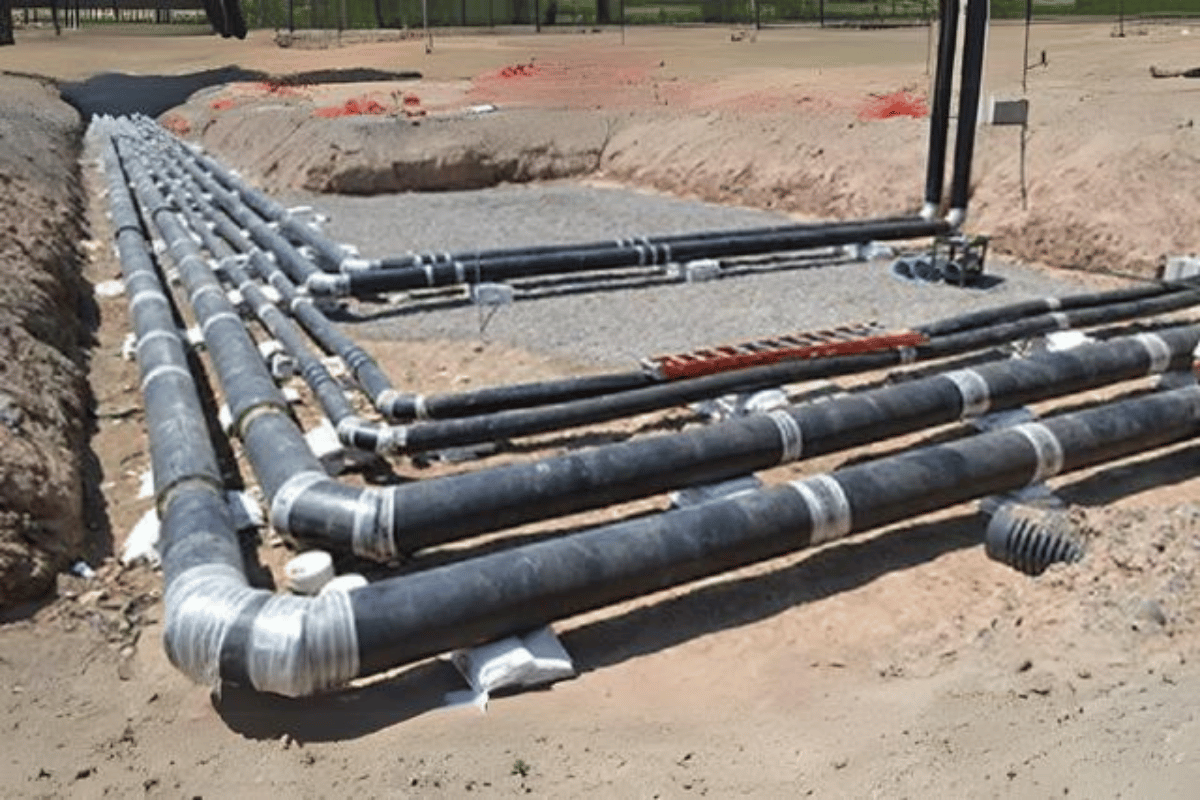
Q1: What is HDPE pipe installation, and why is it commonly used?
A1: HDPE (High-Density Polyethylene) pipe installation involves laying pipes made from HDPE material, which is known for its durability, flexibility, and resistance to corrosion and chemicals. Due to its longevity and ability to handle diverse environmental conditions, HDPE is widely used in various industries.
Q2: What are some key considerations during the HDPE pipe installation process?
A2: Key considerations include proper site assessment, ensuring compliance with industry standards, accurately managing load and pressure, and conducting regular maintenance and inspection. These aspects provide the installation’s safety, efficiency, and longevity.
Q3: How does trenchless technology benefit HDPE pipe installation, specifically HDD (Horizontal Directional Drilling)?
A3: Trenchless technology, including HDD, minimizes surface disruption by allowing pipes to be installed below ground without extensive excavation. This method reduces environmental impact, decreases costs associated with surface restoration, and enhances project completion timelines.
Q4: What maintenance practices are recommended for HDPE pipes post-installation?
A4: Regular inspections, pressure testing, and monitoring for any signs of wear or damage are vital. Periodic assessments ensure the system’s integrity and performance over its lifespan, addressing any issues proactively before they escalate.
Q5: Where can I find reliable resources for HDPE pipe installation guidelines?
A5: Comprehensive resources include the Plastics Pipe Institute’s Handbook, the American Water Works Association’s design and installation guidelines, and the International Society for Trenchless Technology’s guidelines on trenchless methods. These provide valuable insights and best practices for successful installations.





